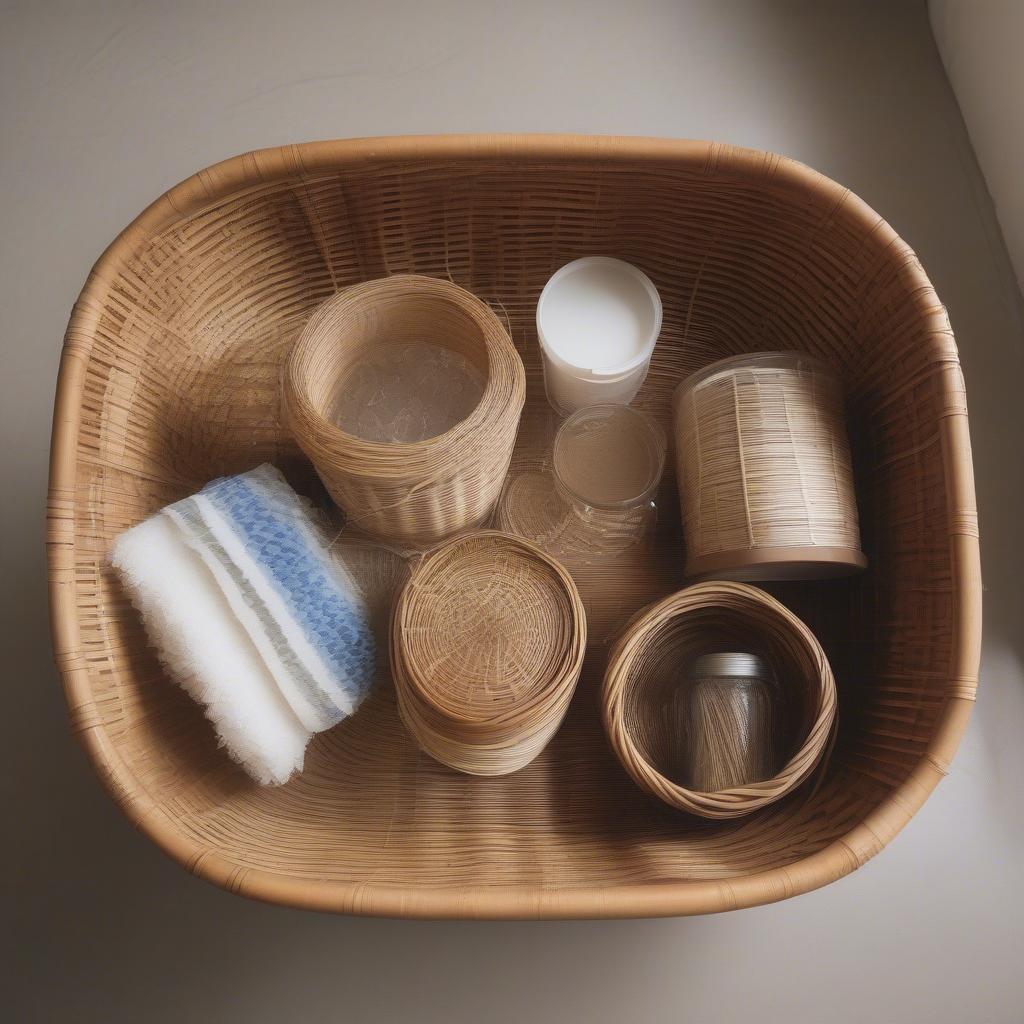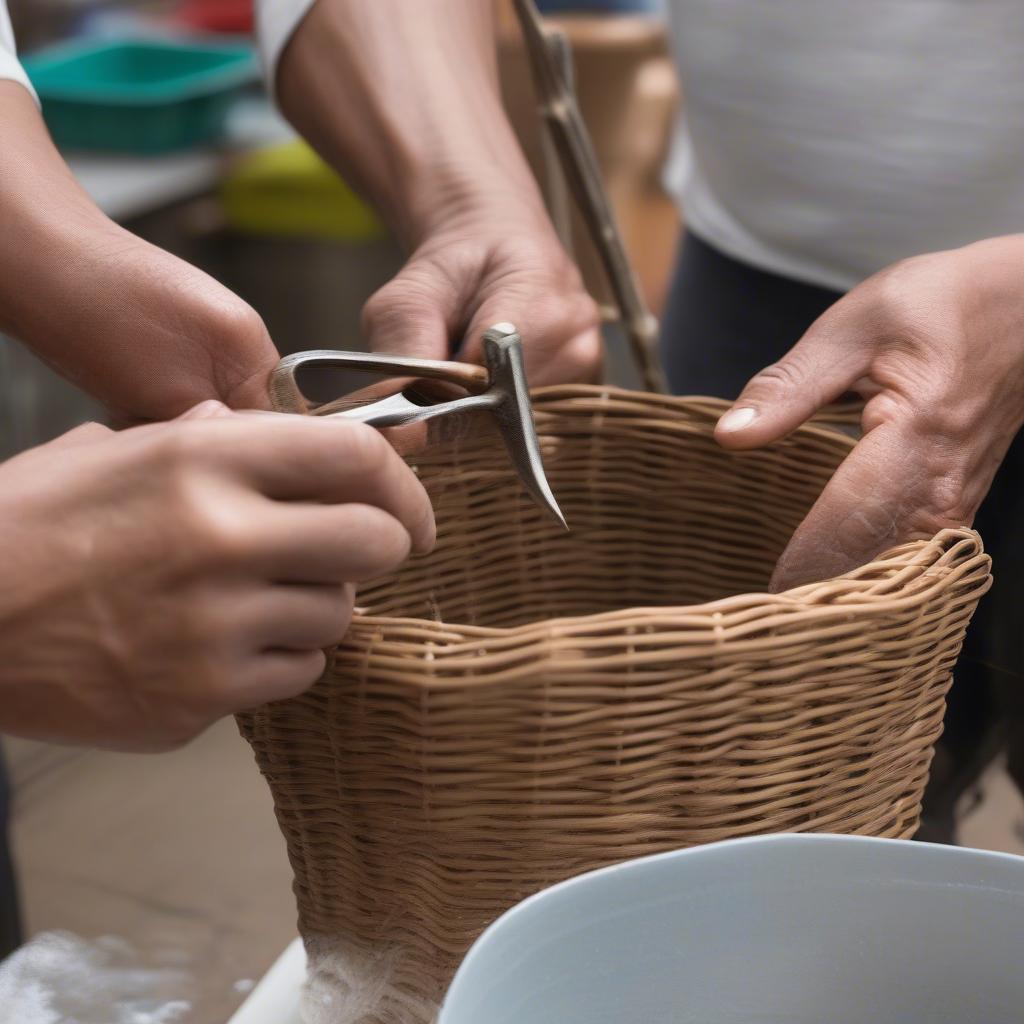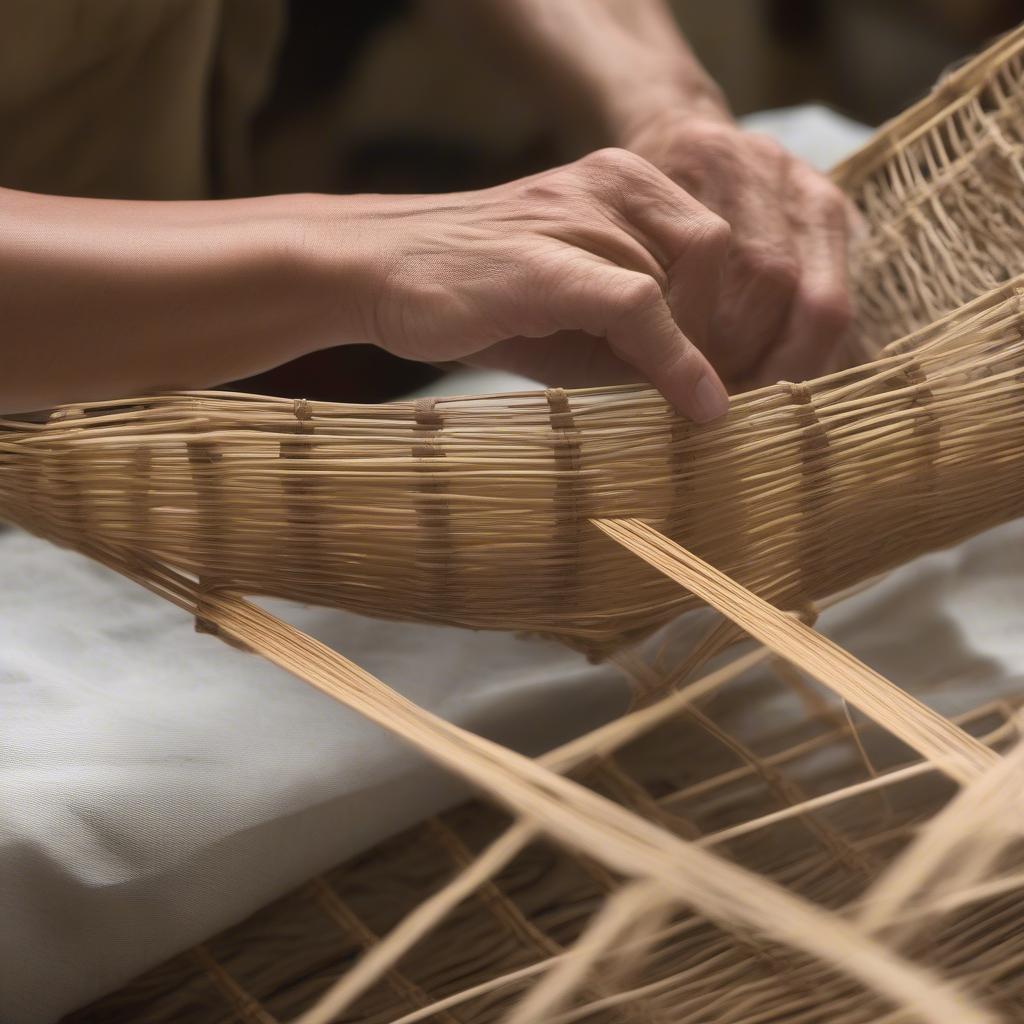Basket Weaving
How to Weave a Tight Square Basket
Learning How To Weave A Tight Square Basket is a rewarding skill that allows you to create beautiful and functional pieces for your home or to give as gifts. This guide provides a step-by-step process to achieve a sturdy and visually appealing square basket, whether you’re a beginner or looking to refine your weaving technique.
Gathering Your Materials for a Tight Square Basket
Before you begin to weave a tight square basket, you’ll need to assemble the right materials. Choosing high-quality materials will ensure a durable and aesthetically pleasing final product. The key components include:
- Weaving Material: Reed, willow, rattan, or even repurposed materials like plastic bags can be used. For a tight weave, consider thinner, more pliable materials. Rattan is an excellent choice due to its strength and flexibility.
- Base: A pre-made square base is recommended for beginners, though you can also create one yourself using thicker strands of your chosen weaving material.
- Scissors or Pruning Shears: For trimming the weaving material.
- Soaking Container: A bucket or tub for soaking the weaving material to make it pliable.
- Measuring Tape or Ruler: To ensure consistent sizing.
- Optional: Pegs or clamps to hold the base in place while weaving.
 Soaking Basket Weaving Materials
Soaking Basket Weaving Materials
Preparing Your Materials for Weaving
Soaking your chosen weaving material is crucial for a tight square basket. This process softens the fibers, making them more flexible and less likely to break during the weaving process. Soak your material for the recommended time based on the type you are using. Generally, 30-60 minutes is sufficient. Over-soaking can weaken the material.
 Preparing Rattan for Square Basket Weaving
Preparing Rattan for Square Basket Weaving
Beginning the Weaving Process: Creating a Solid Foundation
Once your materials are prepared, it’s time to start weaving. Begin by securing the vertical stakes to the base. Ensure these are evenly spaced and firmly attached. This will form the framework of your square basket. Secure the stakes using a simple over-under weave.
What if you want to create a unique design element? Consider incorporating a contrasting color or material for the initial rows. This can add a personalized touch to your finished basket.
Building Up the Sides: How to Weave a Tight Square Basket
Now, you’ll begin weaving the sides of your basket. Using a consistent over-under pattern, weave the flexible strands around the vertical stakes. Maintain even tension throughout the process. This is key to creating a tight and uniform weave.
Remember, consistent tension is the secret to a tight square basket. As you add rows, gently push them down against the previous rows to create a compact and sturdy structure.
 Weaving the Sides of a Square Basket
Weaving the Sides of a Square Basket
Finishing Touches: Securing the Rim
Once you’ve reached your desired height, it’s time to finish the rim. There are several techniques you can use to create a neat and secure edge, including folding the stakes over and tucking them into the weave, or adding a separate rim of thicker material.
Remember, a sturdy rim is essential for a functional and long-lasting basket. A well-crafted rim also adds a polished look to your finished piece.
How Long Does It Take to Weave a Square Basket?
The time it takes to weave a square basket depends on the size, complexity of the pattern, and your experience level. A small, simple basket might take a few hours, while a larger, more intricate basket could take several days.
What is the Best Material for a Tight Weave?
Rattan is a popular choice for tight weaves due to its strength and flexibility. However, willow, reed, and even how to weave a basket using plastic bags can also be used effectively.
Troubleshooting Common Weaving Problems
If you encounter loose strands or gaps in your weave, simply backtrack a few rows and tighten the weave. Patience and persistence are key to mastering the art of basket weaving.
A beautifully crafted nantucket basket weave salt pepper set is a testament to the artistry of basket weaving. From intricate patterns to simple designs, the possibilities are endless.
Conclusion
Learning how to weave a tight square basket is a fulfilling journey that connects you with a rich tradition of craftsmanship. By following these steps and practicing regularly, you’ll be able to create beautiful and durable baskets you can be proud of. Remember to choose quality materials, maintain even tension, and be patient with yourself throughout the process. How to weave a tight square basket becomes easier with practice, allowing you to create increasingly intricate and stunning pieces.
FAQs
-
What are the basic steps to weave a tight square basket?
Gather your materials, prepare them by soaking, create a solid foundation by securing the stakes to the base, build up the sides using a consistent over-under pattern, and finish the rim. -
How do I maintain even tension while weaving?
Practice and patience are key. Use consistent pressure as you weave each row and gently push the rows down to maintain a tight structure. -
What can I do if my weave becomes loose?
Simply backtrack a few rows and tighten the weave. Don’t be afraid to undo and redo sections if necessary. -
Can I use other materials besides rattan?
Yes, you can use willow, reed, or even try your hand at how to weave a paper heart basket. -
How can I add a decorative touch to my basket?
Consider incorporating contrasting colors or materials, or adding embellishments like beads or feathers to the rim. You can even try basket weave box braids for a unique hairstyle. -
Where can I find inspiration for basket weaving patterns?
Online resources, books, and even visiting museums or craft fairs can provide a wealth of inspiration. For those interested in other crafts, a chunky basket weave crochet blanket pattern could be a fun project. -
How can I care for my finished basket?
Avoid excessive moisture and direct sunlight. Dust regularly with a soft cloth or brush.
Further Assistance
For any questions or assistance, feel free to contact us at Hanoi, Vietnam or Tech Avenue, Suite 12, San Francisco, CA 94105, USA. We have a 24/7 customer support team.
